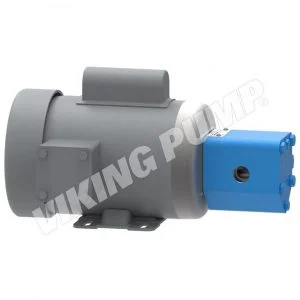
 Get Longer Life from Your Internal Gear Pumps
Get Longer Life from Your Internal Gear PumpsOver the last several months I have run into several user misconceptions about internal gear pumps.
These three common errors can reduce the life and capabilities of your internal gear pumps.
First: Bump starting the pump to check rotation.
This is a common practice among maintenance crews. They will turn over the motor to check and see if they have the rotation going in the right direction. The problem is, they have already attached the pump to the motor. Internal gear pumps cannot operate dry. I saw this while visiting a customer last week. They “bump started” the pump to check rotation. Since there was no product in the pump the rotor rubbed against the casing and created some scaring on the casing. Dry starting a pump with mechanical seals can also ruin the seals. Fortunately for this customer they did not damage the seal.
Second: Internal gear pumps create suction.
I have several customers that use internal gear pumps to unload trucks with various products. Inevitably they start the pumps and expect the pump to pull the product from the truck. Internal gear pumps are not self-priming. Internal gear pumps need a flooded head in order to start pumping product. Once the product is at the pump, then they will create suction. It has the same principle as siphoning something using a hose. Once product has been pulled into the hose the flow creates suction to pull the rest of the product out. Plus you need to remember, don’t start the pump dry.
Third: My packing seal will not stop leaking.
I get this all the time. Maintenance guys will take me to a pump and ask why it leaks. The first thing I check is if it has packing for the seal. Packing is made to leak some. By letting the fluid come thru the packing, it will keep it lubricated so as not to dry out and scar the shaft. One thing a lot of people will do to try and stop the leak is tighten the retaining bracket. This is also a no no. Tightening the bracket can also damage the pump. There are different style packing that can reduce leaking but in general packing is made to leak. If it is necessary to stop all leaking you will need a mechanical seal. Depending on the type pump, you may need to change styles in order to get the mechanical seal.
Avoiding these three mistakes can significantly increase the life of your pump and make sure you are able to maintain the performance capabilities of the pump.


